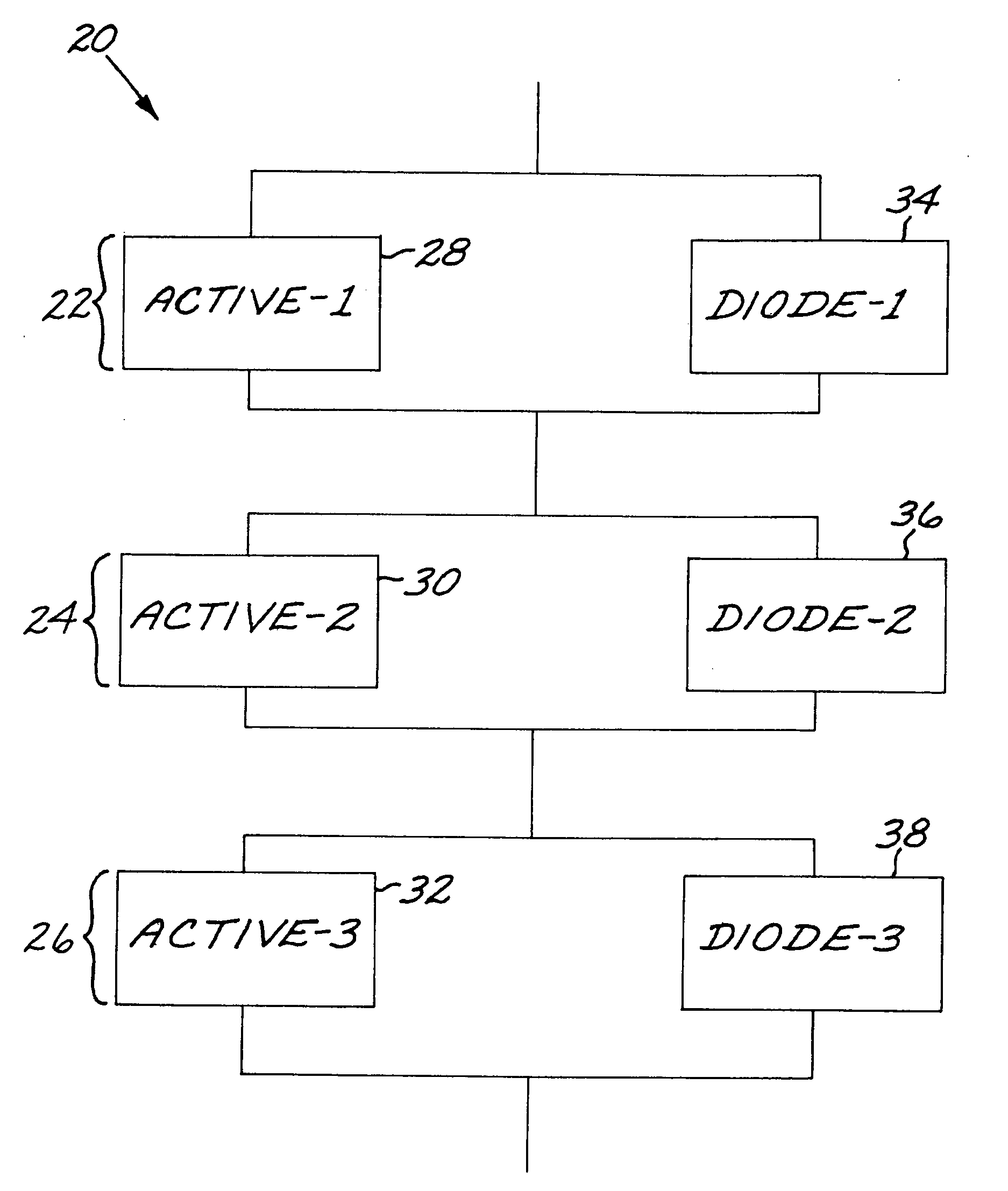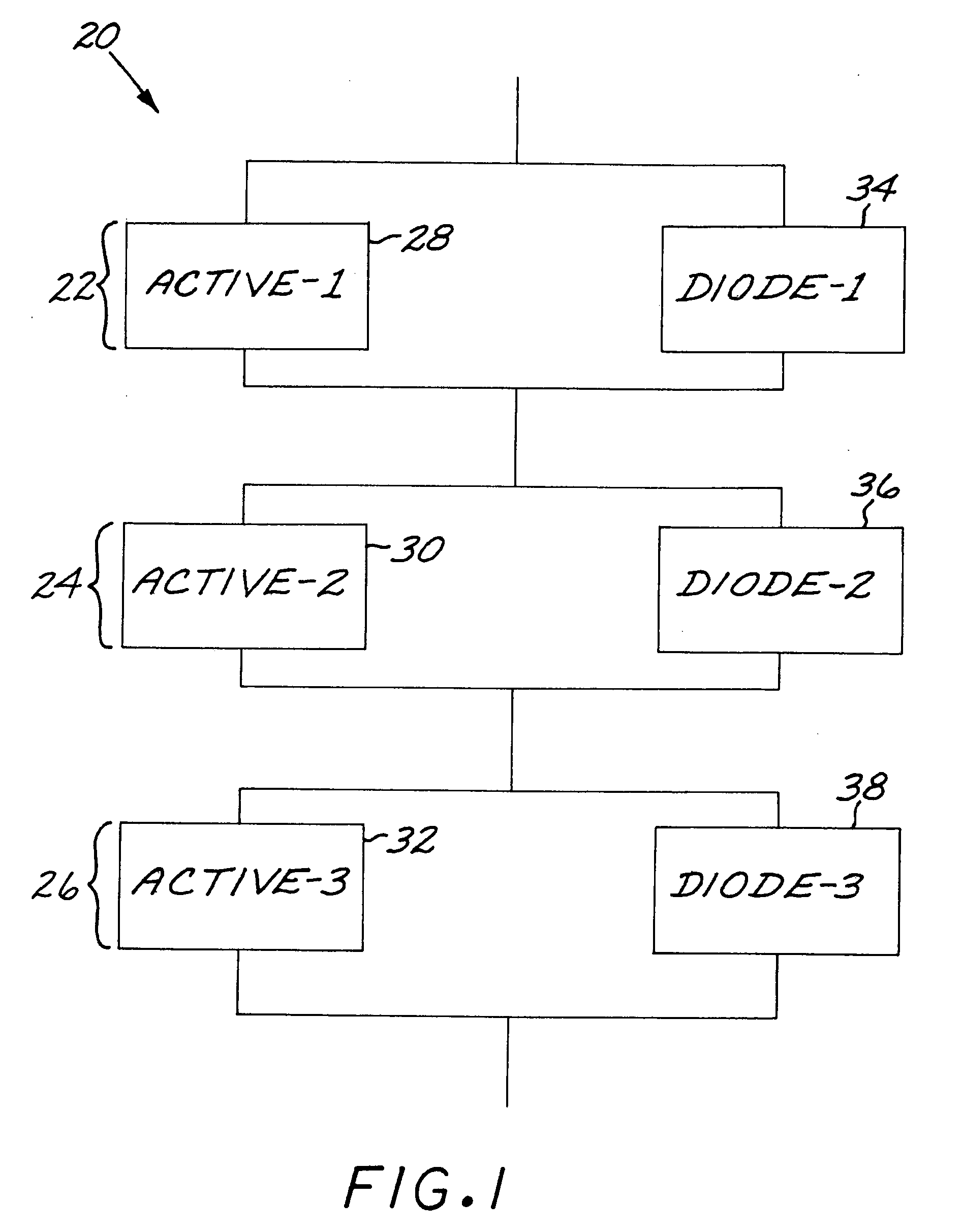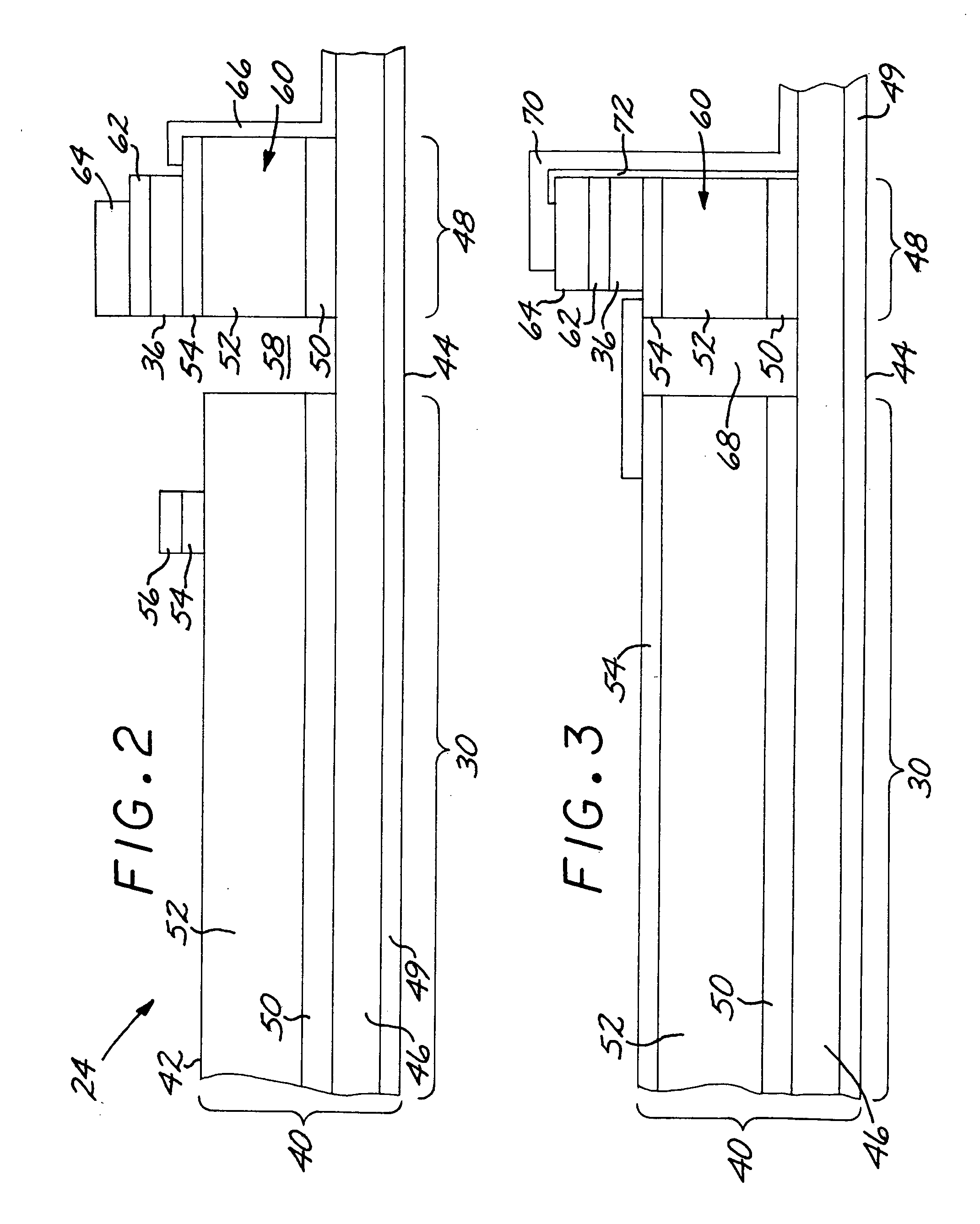Solar cell array with isotype-heterojunction diode
a solar cell and junction diode technology, applied in the direction of pv power plants, light radiation electric generators, generators/motors, etc., can solve the problems of reduced solar cell efficiencies, reduced production yields, and limited solar cell voltage and electrical current output, so as to minimize the forward voltage drop and minimize the effect of power dissipation
- Summary
- Abstract
- Description
- Claims
- Application Information
AI Technical Summary
Benefits of technology
Problems solved by technology
Method used
Image
Examples
Embodiment Construction
[0021]FIG. 1 depicts a solar cell array 20 having at least one solar cell, and in this case three solar cells 22, 24, and 26. The solar cells 22, 24, and 26 are electrically connected in series. Each solar cell 22, 24, and 26 includes an active region, respectively 28, 30, and 32, which produces a photovoltaic output when illuminated, and a isotype heterojunction diode, respectively 34, 36, and 38, electrically connected in parallel with the respective active region 28, 30, and 32. If one of the active regions, for example, active region 30, should cease to produce an electrical output, the current impressed on the active region 30, in the absence of its respective diode 36, by the other series-connected solar cells 22 and 26 would damage the solar cell 24. The isotype heterojunction diode 36 provides a parallel current path around the active region 30 to protect it from such damage.
[0022]FIG. 2 illustrates an exemplary one of the solar cells 24, in which the active region 30 and t...
PUM
 Login to View More
Login to View More Abstract
Description
Claims
Application Information
 Login to View More
Login to View More - R&D
- Intellectual Property
- Life Sciences
- Materials
- Tech Scout
- Unparalleled Data Quality
- Higher Quality Content
- 60% Fewer Hallucinations
Browse by: Latest US Patents, China's latest patents, Technical Efficacy Thesaurus, Application Domain, Technology Topic, Popular Technical Reports.
© 2025 PatSnap. All rights reserved.Legal|Privacy policy|Modern Slavery Act Transparency Statement|Sitemap|About US| Contact US: help@patsnap.com



